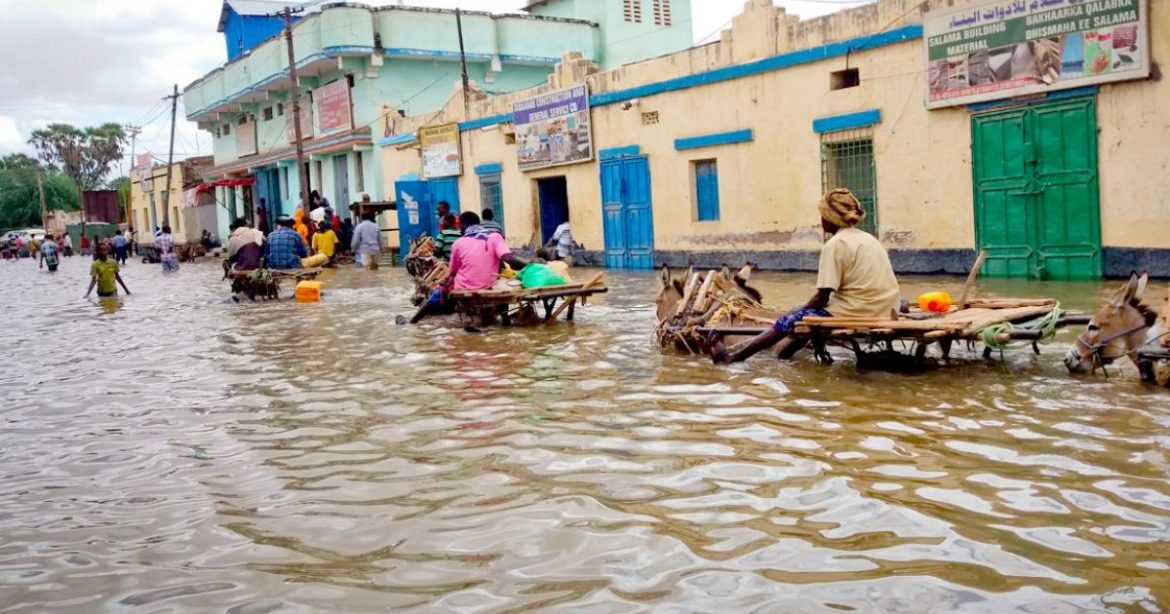At least 29 people have been confirmed killed and more than 113,000 displaced after heavy rains and devastating flooding hit Kenya and Somalia.
According to reports, the Somali federal government declared a state of emergency Monday after floods caused the deaths of 14 people. This is even as emergency rescuers had been working to reach an estimated 2,400 people still trapped by flood waters in the Luuq district of southern Somalia’s Jubaland state.
The U.N. has since called for the evacuation of people who are living along the entire stretch of the Juba River, warning of a high risk of flooding there and along the Shabelle River.
Elsewhere In Kenya, the Red Cross said that at least 15 people had died as a result of flooding. The organisation said that floods also destroyed 97 hectares of agricultural farmland and killed 1,067 animals.
Read also: Report shows Beef, soy and palm oil products causing deforestation despite ban
Recall that Kenyan weather forecasters had been warning the country since September to expect heavy precipitation between October and December, the country’s rainy season. Weather experts were reported to have been contradicted by Kenyan President William Ruto, who predicted “there would be no devastating El Nino flooding.”
El Nino, which is a naturally occurring weather phenomenon, causes surface waters of the central and eastern Pacific to warm, affecting weather patterns around the world.
The U.N reports that the heavy rains come one year after the horn of Africa suffered its worst drought in around 40 years, which along with rising prices in food due to war in Ukraine, caused 43,000 people to die and put Somalia on the brink of famine.
Available reports show that the severe weather also affected the Somali region of Ethiopia, where crops failed to grow and thousands were displaced from their homes.
Story was adapted from VOA.
